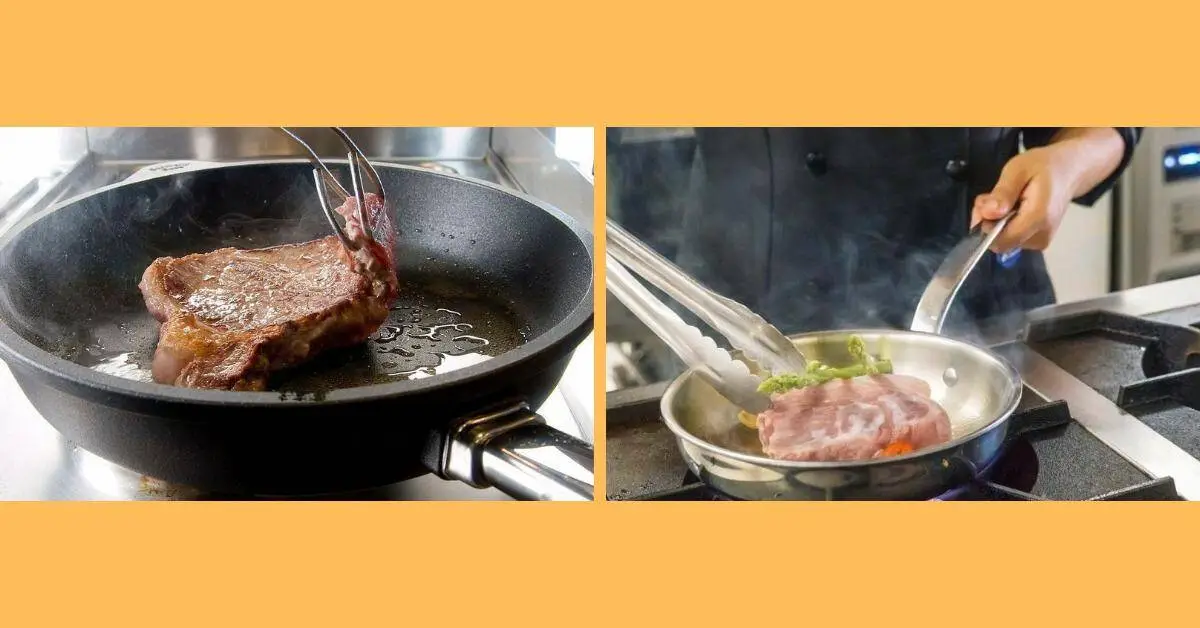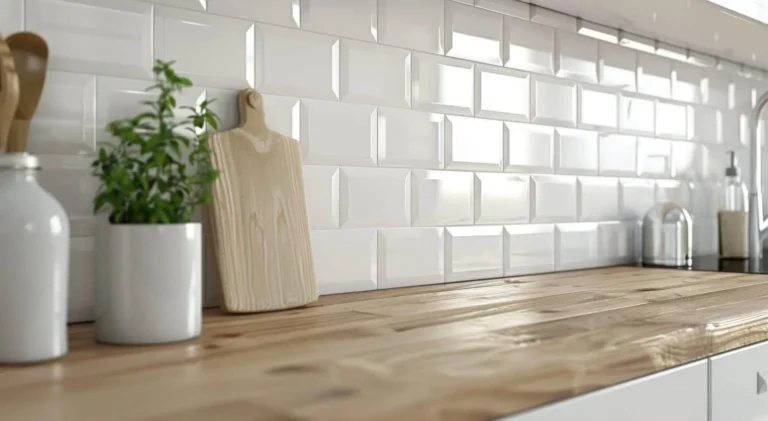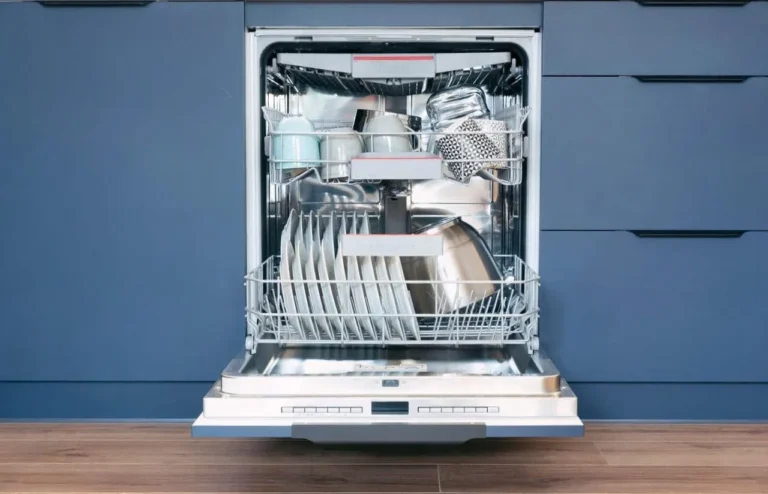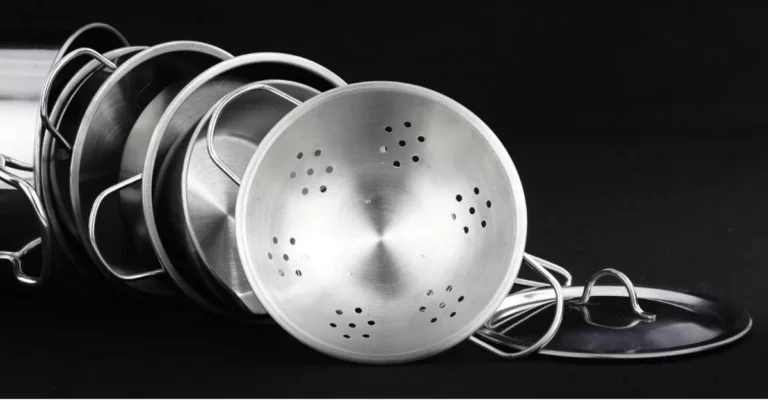We may have come across different types of cookware, all made from different materials. And among them, the most popular would arguably be hard anodized aluminum.
Utensils made from aluminum are hard and durable and can conduct heat excellently. Almost all brands out there offer hard anodized aluminum cookware at different price points.
The same can be said for stainless steel cookware that provides optimal heat retention and conduction. Stainless steel is used in a variety of things, not only cookware. But its popularity surged mainly as a build material for cooking equipment.
And of course, the question in your mind would be why should you pick one over the other. What would be your advantages if you pick aluminum over steel? Is there a difference in prices offered? And if so, what sets them apart?
In this article, I will cover all that and more.
Table of Contents
Build and Construction
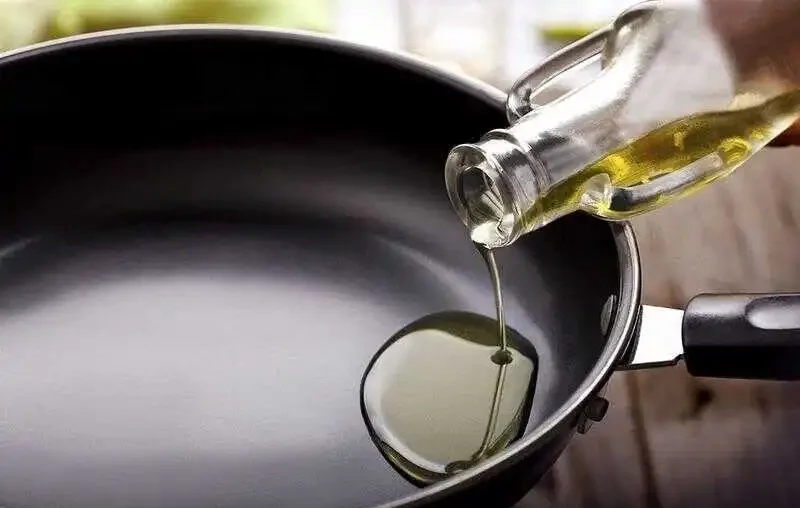
Hard anodized aluminum is basically a layer of conducting metal added to the base of pans. And that particular layer has been through an electrolytic process that oxidizes it to create a more durable and corrosion resistant material.
The layer is also non-porous and non-reactive, making it perfect for cooking food with acidic properties like lemon, tomatoes and wine.
Almost all options these days have a nonstick coating fused together with the aluminum layer. Some of the cookware options are double and triple-forged to make an even base that is not only very strong but also prevents wobbling and warping of bases.
The nonstick coating, however, may have toxic metals in them if you are not careful. Although most options these days come without PFOA, you still have to check if they contain PFAS, lead or cadmium in it.
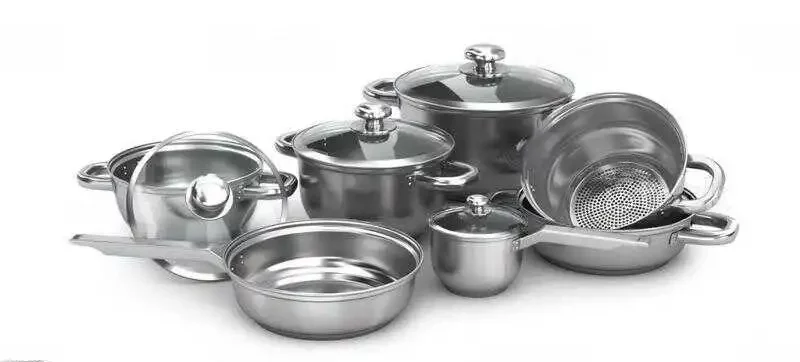
Stainless steel, on the other hand, is made when a variety of raw materials including iron ore, chromium, nickel, etc are melted together and fused to form a powerful alloy.
Excess carbon is removed through a decarburization process and this step is what determines the tensile strength of processed steel.
Some finishes on the surface may be added by the manufacturer but this doesn’t make any difference in the quality of the final product. It may make the surface smoother by removing extra impurities but that’s about it.
These usually do not have a nonstick coating as these kitchen equipment are independently steel themselves.
However, the chromium content in the stainless steel alloy is corrosion resistant and can be made non-stick if a few simple precautions are taken. Read how to prevent sticking of the surface right here.
Appearance and Feel
Hard anodized aluminum cookware is generally dark in color on the exterior. Usually dark grey or black, they look this way as the electrolytic anodizing process has an impact on the decolorization of the gadget.
Some options on the market, certainly the ones made from plain aluminum come painted in a plethora of colors but hard anodized aluminum come in limited colors.
Stainless steel, on the other hand, comes in a single color option and that is the original silver color of steel. It is usually not painted in different colors. Besides, its original appearance is attractive enough to match any kitchen theme.
The surface of stainless steel pots and pans looks very shiny with a brushed steely silver surface.
There are also cookware options that do not come with a brushed finish look. They are not sanded and therefore look less shiny and more matte.
The advantage of having a completely colorless steel surface is that if over time, the pots get scratched they wouldn’t be visible to the naked eye.
Strength and Durability
The electromagnetic process that precedes the finished anodized aluminum equipment is responsible for strengthening the metal. This makes it one of the strongest materials used for cookware construction.
The forged bases and thick builds give it even more strength making it one of the most durable and preferred options for manufacturing kitchenware and utensils.
As mentioned previously, stainless steel is made from a mixture of very strong raw materials like iron or chromium and nickel, which when used together make for a very durable and rugged alloy that lasts for decades.
Fully-clad stainless steel cookware is impressively bonded and come in 3, 5 and 7-ply options. You can look here at the FAQ section to know which kind of ply you should choose. But that’s not very important to the overall quality.
Some cookware options also exist that are made by an “impact-bonded” manufacturing process. However, this alloy tends to be cheaper and less strong.
Make sure you look out for the words “fully clad” in stainless steel cookware options if you want durable cooking tools.
Weight
In this aspect, anodized aluminum weighs significantly less than stainless steel. Aluminum being a lighter and more flexible material weighs about a third of what stainless steel does – if the same item is being considered in both options.
Malleability
Malleability is defined as the capability of a metal to be hammered or pressed into a different shape without getting damaged or broken. The more malleable a metal is, the easier it is to engineer tools out of them.
While aluminum in general is pretty resistant to not breaking under the stress of processing, anodized aluminum has an even greater tensile strength. About 3 times more, to be precise. This makes its malleability quotient greater than that of stainless steel.
Corrosion Resistance
Having a chromium content of about 10%, stainless steel is an alloy that is completely resistant to corrosion and rust. The chromium forms a protective oxide layer on the steel’s surface after reacting with the surrounding air.
This prevents the steel from forming rust and getting corroded.
The process of anodizing aluminum exposes the metal to a chemical acid bath that causes an electrical current to oxidize the surface and create a thin film over it that protects it from weathering and corrosion.
While anodized aluminum can still rust, the film prevents that from happening for a long time. And when it does, it’s not even harmful. So there’s no need to worry.
Scratch Resistance
As stated previously, anodized aluminum has stellar tensile strength and therefore, doesn’t chip, flake or peel during the manufacturing process or during use.
Improper use or rough handling of pots and pans will eventually wear out the best of metals, so this is not to say aluminum is indestructible.
While the anodized layer of the aluminum may be resistant to standard scratches, most cooking products built from this have a nonstick coating which may peel or scratch over time or due to misuse.
Stainless steel, however, is not as scratch-resistant as one would hope. Products with finer polishing and sanding done may appear all shiny, but if you use metal tools while cooking with these or store them in the wrong manner – scratches are inevitable.
The good news is, it doesn’t matter if these get scratched as they are plenty strong to withstand scratches and a lot more. This will not have an impact on your quality of cooking in any way, so don’t worry.
Performance in the Kitchen
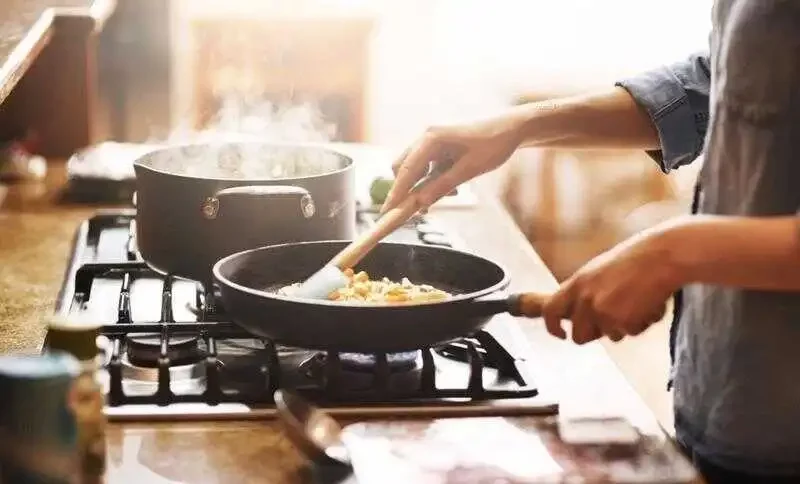
Heat Retention and Conductivity
Anodized aluminum is pretty good at heat conduction. The material distributes heat very evenly which prevents hot spots from forming.
They mostly come in non-stick options which means they have a coating on top of the interior surface that prevents food from burning or sticking. Even if you do not use butter and oil.
This makes it great for cooking all kinds of dishes easily and without making too much of a mess. But since the surface is quite slick, it becomes difficult when searing steaks or other meat that needs some kind of a crust or even for simple browning.
This can be fixed by changing the temperature during cooking. Otherwise, the superb heat retention is perfect for making a variety of dishes.
Heat retention is excellent in stainless steel, so much so, that very often it runs the risk of food sticking to the surface. But nothing that can’t be fixed with a little bit of oil or butter and adequate preheating of the pans.
Stainless steel is also known to be a very conductive metal and is extremely efficient in transferring heat quickly from the heat source to the food. This makes it a wonderful option for frying, searing and browning food.
It’s very responsive to temperature changes which makes it a great option for chefs who like to have a good amount of control over the cooking process.
Heat Resistance
If you’re purchasing high quality full-cladded stainless steel cookware, then be assured that it will have a high melting point and therefore can resist a higher temperature.
These are generally oven-safe and can go in the oven for over 500°F. Make sure the handles aren’t made from other materials like plastic.
Aluminum pans on the other hand, anodized or not, cannot withstand very high temperatures and therefore not safe to go into the oven.
The ceiling temperature is usually mentioned on the packaging of the equipment so you don’t have to guess.
Versatility
In terms of versatility, both metals aid in cooking a large number of dishes. Both are conductive metals as established already and all you really need is heat, isn’t it?
Apart from the sticking of food on stainless steel surfaces and anodized aluminum not being able to withstand oven temperatures of over 500°F, there isn’t really much to discredit either of their usefulness in the kitchen.
Cleaning and Maintenance

Now, this part does not really differ for either of the materials. But stainless steel may need a little more care than hard anodized aluminum.
Usually, dish soap with some hot water does the trick for anodized aluminum. Make sure the used pot or pan has enough time to cool down before being submerged in hot water or it may warp.
Add some dish soap to the hot water and this will soften the residue stuck on the aluminum which makes it easier to clean it later with a soft sponge or washcloth.
Do not use harsh brushes or abrasive steel wool as they may cause damage to the metal exposing the layer underneath. Which may later react to the food being cooked.
If you want to know more about alternate methods for cleaning stubborn stains and discoloration, I have answered those queries in my in-depth guide to cleaning hard anodized aluminum.
Stainless steel as an alloy is a bit more sensitive. No doubt it’s a very tough material, but since it is more susceptible to food sticking on its surface it’s better to take a few measures before and after cooking.
Make sure you use enough healthy oil or butter before browning or frying food. Another tip to prevent foods like fish and meat from sticking is to adequately preheat the pans before using them.
Higher heat than normal can cause the pans’ pores to latch on to food quickly and burn just as easily. Not enough heat, on the other hand, will cause to create a steam vapor as a reaction between the oil and the moisture in the ingredients. And that again will cause food to stick.
Just the right amount of heat is when you should hear a sizzling sound when the ingredients hit the pan.
And after some trial and error, I’m sure you will reach the perfect temperature to cook food fast and still maintain its crispiness.
You can use brushes with soft bristles to scrape off the stuck residue. And use cleaners like Bar Keeper’s Friend or even common kitchen ingredients like a lemon and salt mixture to get rid of unyielding stains and remaining food.
Do not use furniture polish or floor cleaners for this purpose as they contain chemicals that will damage the cooking surface.
Storage
Also, make sure the sizes of the utensils aren’t too big or too small. As the size of the cookware not only makes storage a problem, but also creates a hurdle for convenient grasping and handling of the equipment.
You can also use protector pads like these to prevent scratches on the non-stick coating of your aluminum pans.
Price
The price points differ for each material and depend on a variety of factors. Brand, manufacturing process and location – all play a role in determining the cost.
However, just to give a general idea, stainless steel is costlier than hard anodized aluminum. Given we are considering only the best quality full-clad stainless steel and heavy gauge anodized aluminum.
Products that are manufactured with some cost-cutting measures taken, also have a similar difference in value.
Compatibility
Compatible With
Hard Anodized Alumium
Stainless Steel
Gas, Electric, Ceramic; Not Induction
Gas, Electric, Glass-Ceramic, Induction
Yes, but not recommended
Yes, but not recommended
If the packaging says so. It is always recommended to hand-wash.
Yes
Final Thoughts : Which one should you pick for your use case - Stainless Steel or Hard Anodized Aluminum?
- If you want something to cook on your induction cooktop, then definitely do not go for hard anodized aluminum as they aren’t compatible.
- If you have set a strict budget for your purchases, you might find that most anodized aluminum kitchenware will come into your budget. You can also check out our picks for the top cookware sets under $100. However, if you do find stainless steel ones too, then make sure they are fully clad and not impact-bonded to ensure you get the highest quality of cooking equipment.
- If you are looking for quality cookware that will last for a lifetime, then stainless steel would be your best bet. If they are properly cared for, then you will not be needing another kitchen set for a long time.
- Talking about care and maintenance, if you think you do not have the time to care for kitchenware all that much, then anodized aluminum cookware will be more convenient for you as they barely have any special needs when it comes to washing and storing.
Here are a few of my top picks for aluminum and stainless steel cookware:

